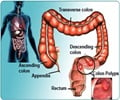Study says aspirin and other medications that prevent blood clotting by inhibiting the accumulation of platelets could increase the likelihood of asymptomatic cerebral microbleeds among older adults.
Cerebral microbleeds, small deposits of the iron-storing protein hemosiderin in the brain, can be a sign of cerebral small-vessel disease.The condition, common among older adults, occurs when the walls of blood vessels in the brain become weakened. When microbleeds occur in certain brain areas, they may indicate a type of small vessel disease known as cerebral amyloid angiopathy, in which the accumulation of amyloid (a protein often related to Alzheimer's disease) causes degeneration of smooth muscle cells and increases the susceptibility of blood vessels to ruptures and hemorrhages.
The study will appear in the June print issue of Archives of Neurology, one of the JAMA/Archives journals.
To reach the conclusion, Meike W. Vernooij, M.D., and colleagues at Erasmus MC University Medical Center, Rotterdam, the Netherlands, investigated the relationship between cerebral microbleeds and the use of anti-clotting medications in 1,062 individuals without dementia involved in the Rotterdam Scan Study. Participants (average age 69.6) underwent magnetic resonance imaging examinations in 2005 and 2006.
Pharmacy records were used to assess whether any of the individuals took anti-clotting drugs. These included aspirin and carbasalate calcium-called platelet aggregation inhibitors because they prevent the accumulation of platelets that form blood clots.
In the years before MRI, 363 (34.2 percent) of the participants had used any anti-clotting drugs, including 245 (23.1 percent) who took platelet aggregation inhibitors (67 taking aspirin and 141 taking carbasalate calcium). Compared with patients who did not use anti-clotting drugs, those who took aspirin or carbasalate calcium were more likely to have cerebral microbleeds visible on MRI. This association was particularly strong among individuals taking these drugs at higher doses, typically used to treat or prevent heart disease.
Advertisement
"There is currently major interest in bleeding risks with the use of antithrombotic or thrombolytic treatment in persons who have microbleeds that are apparent on MRI because this may affect treatment in patients with cardiovascular or cerebrovascular disease," the authors write.
Advertisement
Source-ANI
ARU











